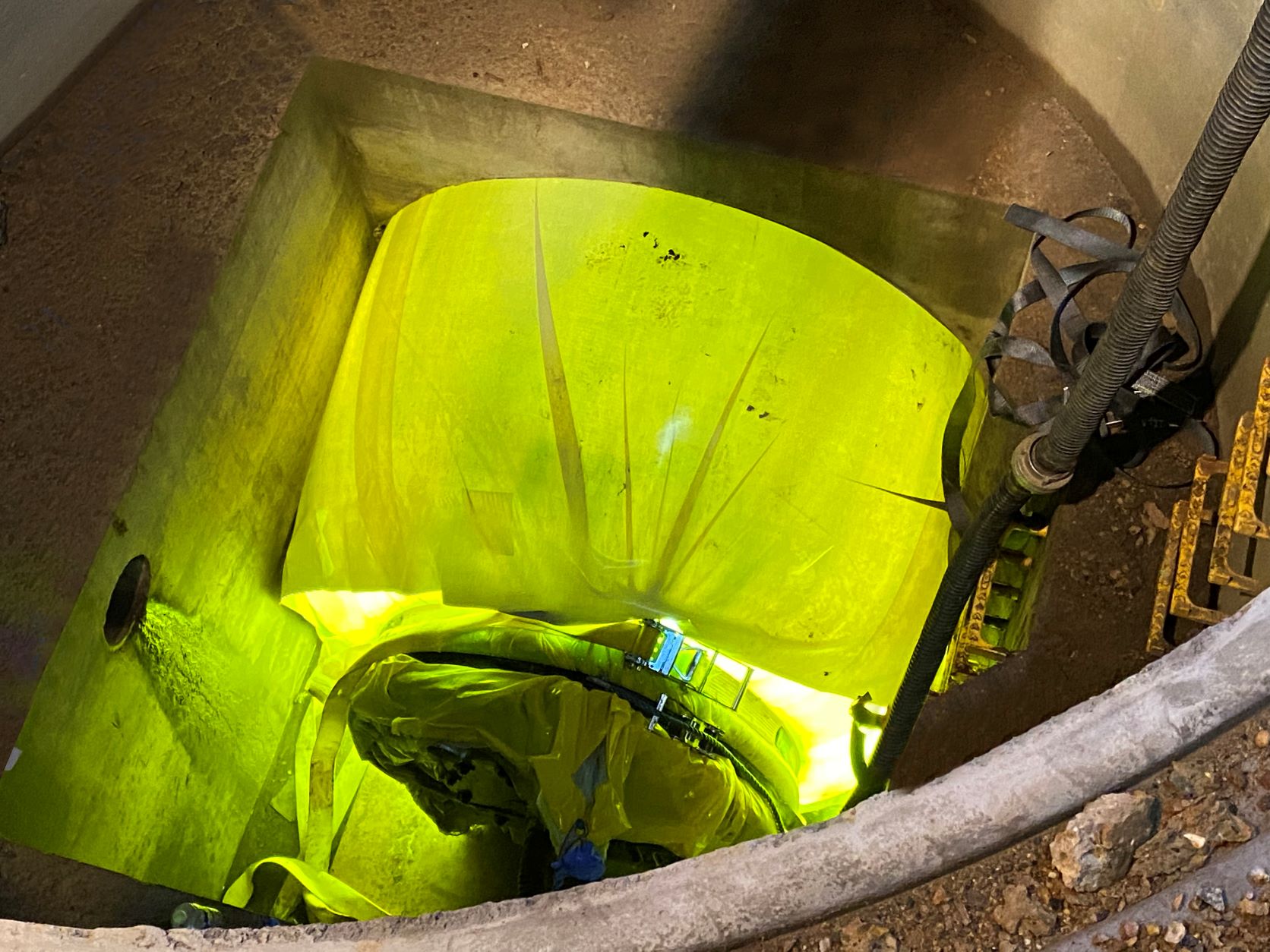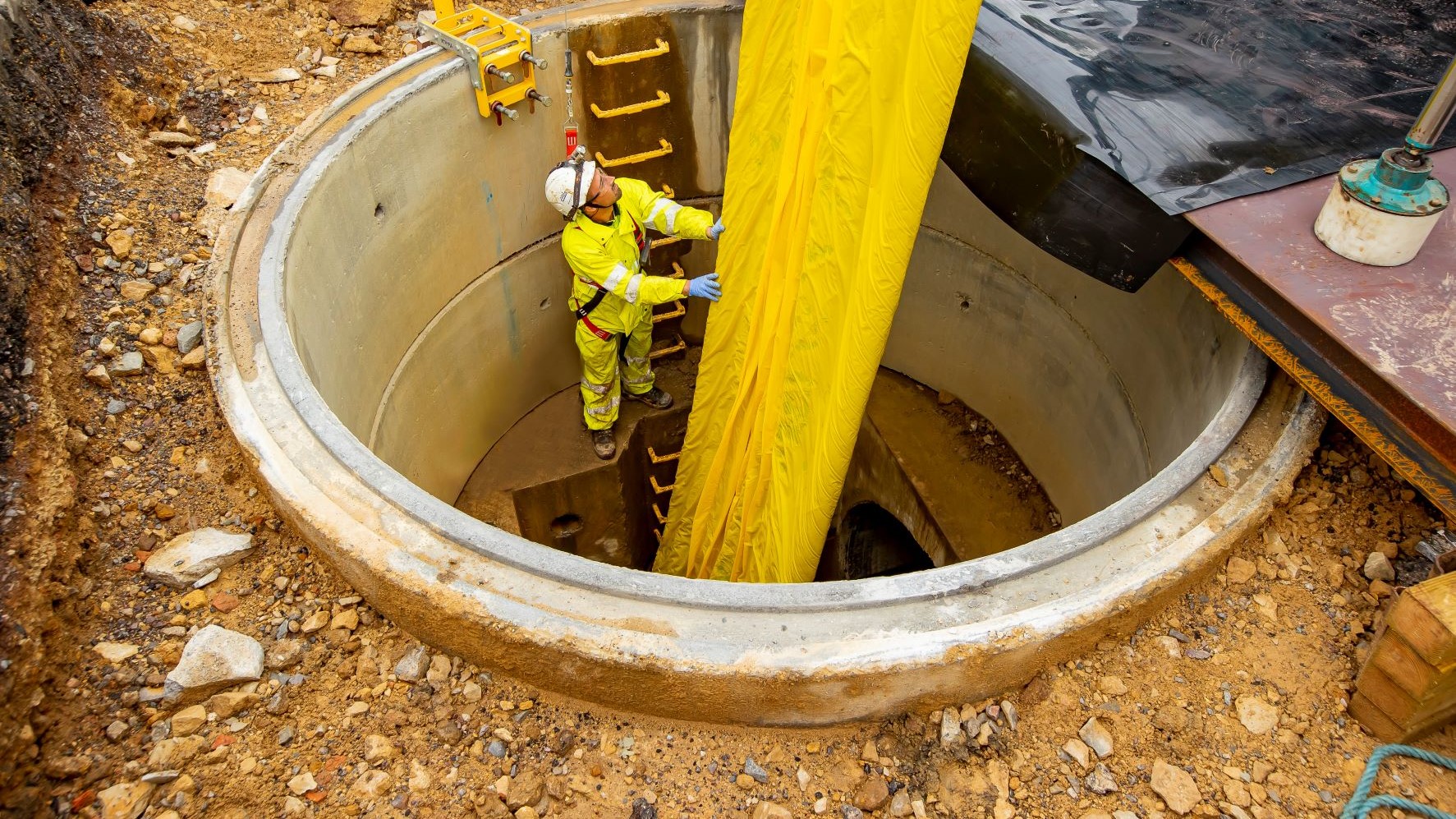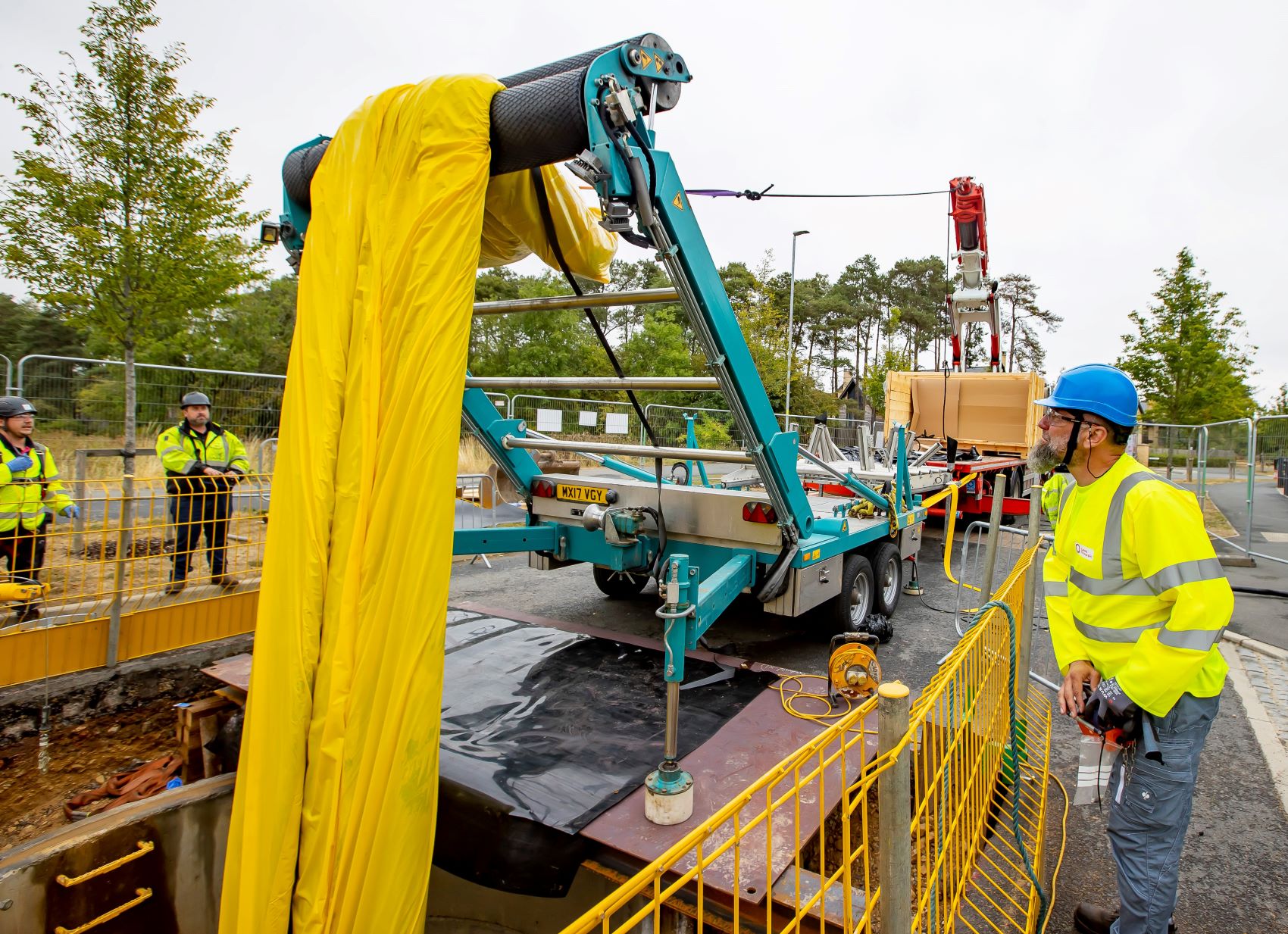National drainage and wastewater maintenance specialist Lanes Group plc has installed its largest ever ultraviolet liner – and one that could be the largest to have been installed in the UK.
The UV cured in place pipe (CIPP) liner was 1800mm in diameter, tall enough for a man of average height to walk along without having to stoop.
It is first 1800mm UV liner installed by Lanes and the first to be supplied in the UK by its German manufacturer, IMPREG.
In a significant development, given the summer UK heatwave, Lanes selected a new type of liner that can be more easily controlled in hot weather, which gave its lining team greater flexibility in carrying out the installation.
Lanes installed the 42-metre-long liner into a storm drain in Corby, Northamptonshire, for developer Urban&Civic to prepare it to be adopted into the public sewer system.
The drain had been found to have deformities and open joints so had to be strengthened before it could be handed over to Independent Water Networks, which would own and maintain the asset.
Sue Kenyon, Lanes Reline Division Manager, said:
The technical challenges created by the size of the liner make this one of the most complex lining projects we’ve ever undertaken.
“It shows how we can deliver cutting edge, no-dig pipe rehabilitation technologies, at the biggest possible scale, that give our clients highly sustainable and cost-effective pipe strengthening and rehabilitation solutions.
“Thanks to meticulous planning, the expertise and determination of our lining professionals, and the excellent support from IMPREG and ProKASRO, which supplied the specialist UV lining rig, the installation has been a complete success.”
IMPREG UK Technical Manager Jack Talbott said:
“This is the largest diameter UV liner we’ve supplied to a UK contractor and we haven’t heard of any as big as this being installed in the UK before.
“The project demonstrates an expansion of what can be achieved by UV CIPP by matching advances in manufacturing and UV lining systems with the installation expertise of Lanes as a contractor.”
In a planning phase that lasted 12 months, Lanes worked with IMPREG and ProKASRO on an installation procedure that has broken new ground in the UK in more ways than one.
To provide the 100-year design life required, the IMPREG GL15 liner had to be 15.5mm thick, contributing to its 9.5-tonne weight.
The power of the UV light train was also supercharged. Its three mega light cores had a combined power output of 36,000 watts, three times higher than a standard light train used to cure a 1200mm liner.
A key reason this extra power was needed was Lanes’ decision to install one of IMPREG’s latest non-thermal liners, which do not contain a curing accelerant, peroxide.

Gary Carey, the Lanes Lining Supervisor, who led the project, explained:
“Peroxide makes the resins more reactive to heat from the UV bulbs, speeding up the curing process.
“The disadvantage is that peroxide liners have to be transported in a refrigerated truck which can cost more than using standard delivery trucks.
“Liners containing peroxide must be installed more quickly than conventional liners, especially in very hot conditions. Given the heatwaves we’ve experienced this summer, using the new non-thermal resin was a wise choice.
“IMPREG’s use of more advanced fast-curing resins, combined with ProKASRO’s more powerful light train, means peroxide isn’t needed, even to cure a record-breaker like the Corby liner.
“The technology’s been developed to extend the use of UV lining in countries with hotter climates. This project demonstrates how, thanks to climate change, it’ll have advantages in the UK as well.”
As the main contractor, Lanes carried out all enabling works for the project, which required a road closure and traffic management on an adjacent road.
A Lanes civils team exposed two 3-metre-diameter concrete chambers beneath the road, between which the liner would be installed.
In an 18-hour operation, a 10-person Lanes team carried out the installation on 17 August 2022, pulling the liner though the storm drain with a 10-tonne winch.
The liner was inflated with compressed air to a pressure of 250 millibars. Then the UV light train was sent through at a speed of between 50cm and 70cm a minute, curing the liner in 70 minutes.
The following day, six lateral connections were reopened. Finally, the Lanes civils team returned to reinstate the road surface to its original standard.
Gary Carey said:
“This very challenging lining project was a success because everyone involved pulled together as one team. The Lanes sewer rehabilitation division’s partnership with IMPREG and ProKASRO worked extremely well.
“Also, excellent support throughout from Urban&Civic meant the installation phase went very smoothly. It has been a privilege to work on what, for Lanes, has been a groundbreaking project.”




